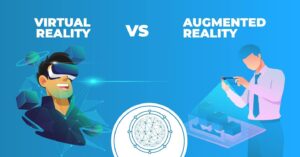Physical Business vs. Online Business: Navigating the Modern Marketplace

The Physical Business Model
Physical businesses are those that operate in a brick-and-mortar setting, where customers visit a physical location to purchase goods or services. These businesses have been the backbone of commerce for centuries and have several distinct advantages:
Tangible Presence: Physical businesses offer a tangible presence, allowing customers to interact with products, see them up close, and try them before making a purchase decision. This tactile experience can be a powerful selling point, particularly for certain industries like fashion, furniture, or food.
Local Community Engagement: Physical businesses often become integral parts of their local communities, fostering relationships with customers, neighbors, and other local businesses. This sense of community can build trust and loyalty among consumers.
Immediate Gratification: Customers can enjoy immediate gratification by purchasing and taking home products on the same day. This immediacy is especially appealing for those who value instant satisfaction.
Branding Through Ambiance: Physical stores can create unique atmospheres and brand experiences that are difficult to replicate online. The layout, decor, and ambiance of a physical store can greatly impact a customer’s perception of the brand.
However, physical businesses also face challenges, such as higher overhead costs, limited reach, and vulnerability to local economic fluctuations.
“Opportunities don’t happen. You create them.”
– Chris Grosser
The Online Business Model
Online businesses, on the other hand, have emerged as powerful alternatives to traditional brick-and-mortar stores. These businesses leverage the internet to connect with customers, offer products, and provide services. Here are some of the advantages associated with the online business model:
Global Reach: Online businesses can reach a global audience, breaking down geographical barriers and accessing a vast customer base. This opens up opportunities for growth and diversification that are often not possible in a physical setting.
Lower Overheads: Operating online typically comes with lower overhead costs. There is no need to maintain a physical storefront, which can reduce expenses related to rent, utilities, and staffing.
Flexibility and Convenience: Online businesses offer unparalleled convenience for both customers and entrepreneurs. Shoppers can browse and make purchases 24/7, while business owners can manage their operations from anywhere with an internet connection.
Data-Driven Insights: Online businesses can gather extensive data on customer behavior and preferences. This data can be analyzed to refine marketing strategies, improve customer experiences, and make informed business decisions.
However, online businesses also face challenges, including fierce competition, cybersecurity risks, and the need for effective digital marketing strategies.
“The best way to predict the future is to create it.”
– Peter Drucker
The Hybrid Approach
In the modern business landscape, some entrepreneurs are adopting a hybrid approach, combining elements of both physical and online business models. This approach can provide the best of both worlds, allowing businesses to harness the strengths of each model.
For instance, a traditional retail store might create an online presence to expand its customer base and offer e-commerce options. Conversely, an online business might open a pop-up shop or showroom to provide a physical touchpoint for customers who prefer in-person interactions.
Conclusion
The choice between a physical business and an online business ultimately depends on your goals, target audience, and resources. While both models have their merits and challenges, the hybrid approach is becoming increasingly popular, allowing businesses to adapt to changing consumer preferences and market dynamics.
Ultimately, the success of any business, whether physical or online, hinges on factors like product quality, customer service, marketing strategies, and adaptability. Whichever path you choose, embracing innovation and staying attuned to customer needs will be key to thriving in the dynamic world of business.





